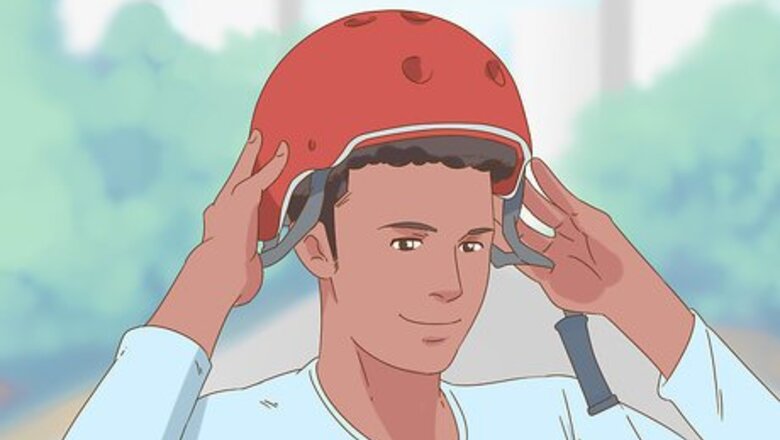
views
Positioning Your Board, Feet, and Body
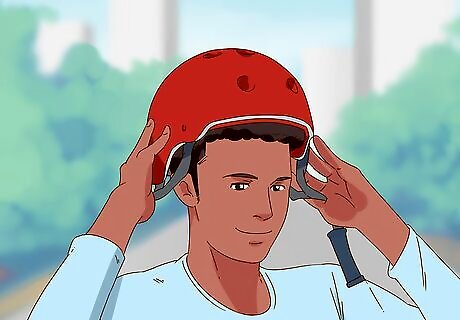
Put on a helmet and other safety gear. You're almost certainly going to fall a few times while learning to heel flip, so it's important to protect yourself. Wear a skateboarding helmet that fits properly, as well as gloves, knee pads, and elbow pads.
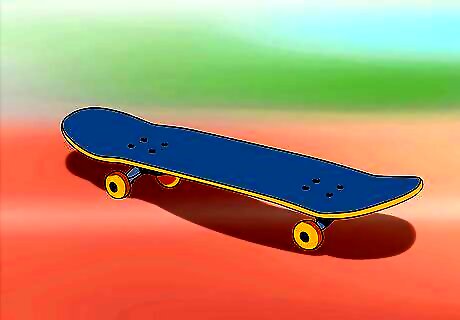
Place your skateboard level pavement where it can remain stationary. The heel flip isn’t the easiest maneuver to master, and adding forward movement to the process makes it even more challenging. Learn to do heel flips when your skateboard isn’t rolling forward before attempting them while in motion. A level parking lot is a good spot for practice. A grassy area might provide a softer landing, but your board won't lift off the ground as easily.
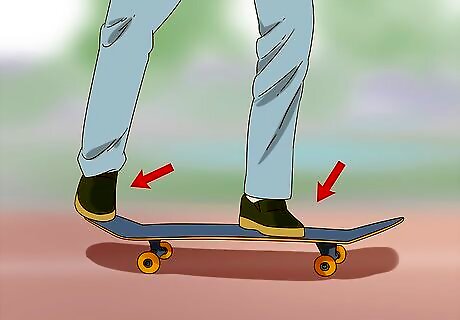
Position your feet over the tail and mid-front of the board. Put your back (right) foot right at—and parallel to—the tail (back edge) of the skateboard, with the back of your heel just slightly hanging over the side. Place your front (left) foot slightly forward of the middle of the board, angled so that your toes are pointing to the front right corner of the board. The big toe of your front foot should hang off the edge a bit. If you’re riding “goofy foot” (with your left foot back), your front (right) foot should be angled to point toward the front left corner of the board. Every subsequent maneuver will be the mirror image of what is described here.
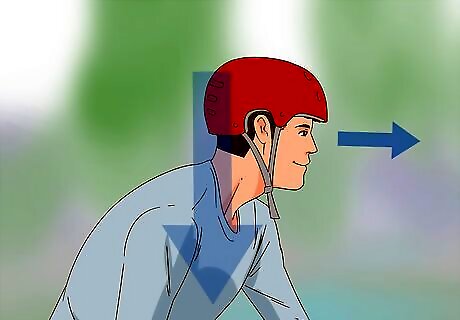
Center your weight and keep your shoulders and eyes faced forward. Bend your knees slightly and distribute your weight evenly over each leg. Rotate your upper body so that your shoulders are facing more to the front than the side of the board. Keep your eyes focused forward and, when you do the actual flip, down toward the front of your skateboard.
Maneuvering Your Feet on the Board Simultaneously
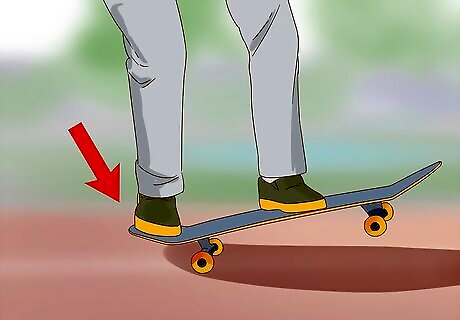
Push down the board’s tail with your back foot. Give the board a firm downward push with your back foot to tip the tail toward the ground. As you push, start to bend your knees more deeply as you get ready to jump. You want to crouch so low that your fingers can touch the ground. Otherwise, you won't be able to generate enough power to flip the board. Each movement in this section—dropping the board’s tail, crouching your body, and tilting and sliding your front foot—should occur simultaneously. Practice doing them all at the same time.
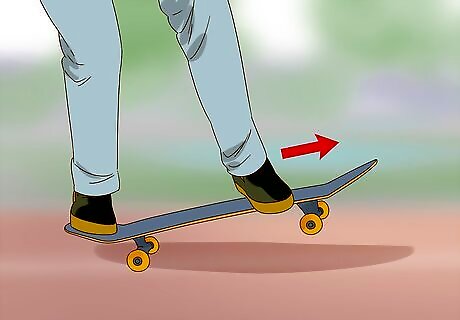
Tilt your front foot slightly forward at the same time. Roll the ankle of your front leg forward a little so that the inside of your front foot lifts off the board. Don’t tilt so far that you lose your balance, however. The outer edge of the bottom of your shoe should still be in complete contact with the board.
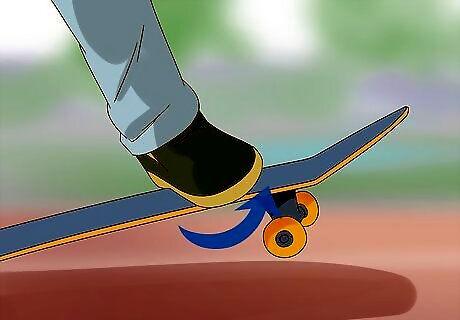
Slide your tilting front foot diagonally on the board. As you tilt your front foot forward, also start sliding it in the direction your toes are pointed. In doing so, the front of your foot will begin to slide off of the front right corner of the skateboard. If you’re riding “goofy foot,” keep in mind that your front foot will move toward the front left corner of the board instead.
Kicking the Board as You Jump Upward
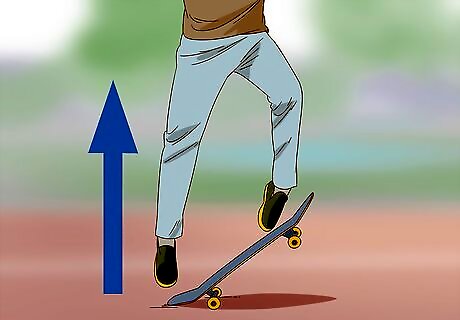
Jump up when the tail hits the ground and your heel’s on the edge. Time your downward crouch so that you’re able to spring upward at the moment you feel and hear the tail of your board hit the ground. At this same instant, your front foot should be tilted forward and sliding just off the edge of the board. When it comes to a good heel flip, timing is everything. Practice doing everything up to this point many times without actually continuing into the jump itself. Start jumping upward only when you have the timing down pat.
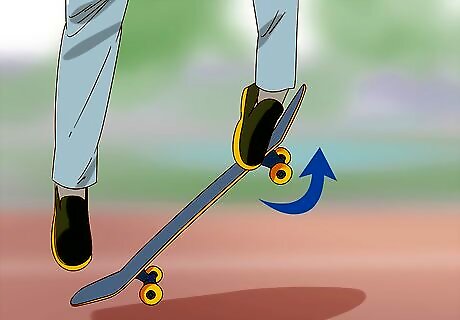
Kick out with your front foot as you jump upward. As you begin your liftoff from the board, kick your front foot forward in the direction that you’re already sliding it. As part of the kick, rotate your ankle so that the toes of your front foot begin to angle upward. Make sure the motion is a forward and upward kick, not a forward and downward stomp. Your feet should still be in contact with the board at this point. The board will lift off the ground with you for the first instant of your jump.
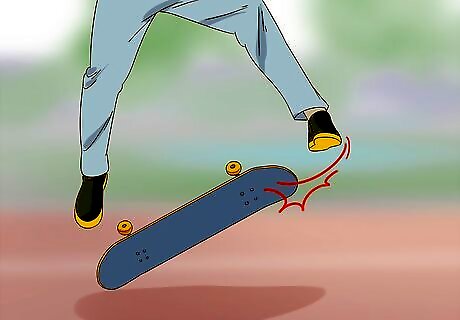
Clip the edge of the board with your heel to rotate it. This is the most critical, and most challenging, part of a heel flip. As you kick out your front foot and rotate your toes slightly skyward, the heel of that foot will naturally flick downward. You need this “heel flick” to strike the inside-front edge of the board with enough power to begin a full rotation. Give the board a good hard shove with your front heel. Otherwise, it won't flip all the way around. The only way to master this element of the heel flip is practice, practice, and more practice. Work on a solid, level surface and plan to “bail out” on the move many times until you get it right.
Sticking the Landing
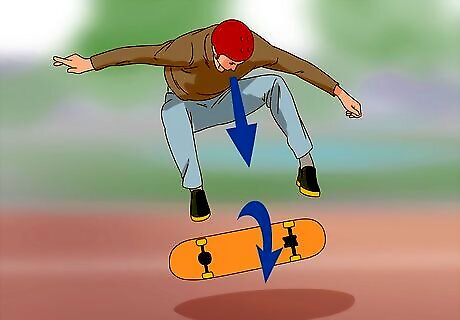
Watch the board rotate while you hover above it. As you continue upward to the high point of your jump, keep your eyes focused on the front of the board below you. Watch as it rotates in a clockwise direction, propelled by the kick you just gave it with your front heel. Make sure your jump has enough height. You don't want the board to get caught under your feet. Raise your knees up as you hit the apex of the jump if you need extra clearance from the board.
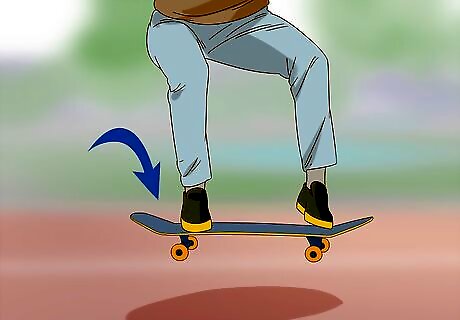
“Catch” the board in the air with your feet as it completes a rotation. If everything is going according to plan, you will begin your descent from your jump just as the top of your board is reappearing into your view. When the board is about to complete a full rotation, extend your feet straight downward to make contact with the top of the board. You’ll have re-established contact with the board at this point, but both you and the board will still be airborne. Try to make contact with the board so that your feet are over the 2 sets of bolts that are visible on the board’s top. These 2 pairs of bolts are directly above the front and back wheels, respectively.
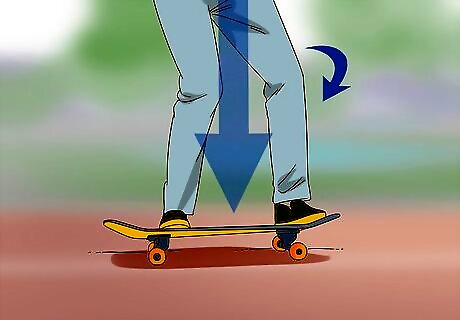
Keep your knees bent and weight centered as you land the board. Maintain secure contact between both feet and the board as the wheels hit the ground. Flex your knees a bit more to absorb the landing. Do your best to keep your body weight centered over your feet equally, instead of leaning forward, backward, or to the side. As mentioned, try to land with your feet over the bolts. Doing so will provide a safer, smoother landing, and prevent your board from snapping.
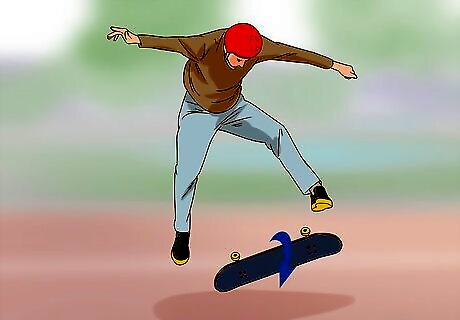
Move on to heel flipping while your board is in motion. Once you can consistently land a heel flip on a stationary skateboard, try it while in motion. Propel yourself forward on the board and follow the process as before. Landing squarely becomes more difficult when you do the trick while in motion, so be prepared to fall a few times. Work on keeping your center of gravity over the board, and focus your eyes on the board while you're in the air above it. When you can land it consistently with the board in motion, consider yourself a successful heel-flipper.



















Comments
0 comment